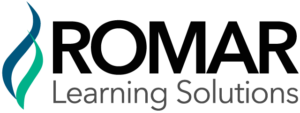
Big data has come to the learning world! Across businesses the gathering and analysis of analytics is a major trend in building business. We have at our fingertips information about all aspects of the business to an unprecedented degree. What does this mean for learning and development, and how can we take advantage of this incredible resource?
What Does Analytics Mean for Learning & Development?
At the core of good learning is providing the learner with training that is valuable. A knowledge, skill, or behavior the learner can apply increases performance or prepares the learner for the next role. Analytics can help in these two areas in three ways:
1. Help identify learning gaps
An obvious use of analytics is to help in the identification of learning opportunities. However, in the past, the best tool we had was a survey of the learner or perhaps the learner’s manager. However, we now have greater access to customer data and performance analytics that shows specific L&D gaps in the knowledge, skill, or behavior of the learner from a wider perspective. The most important perspective is the learner’s customer.
2. Improve learning agility
In the past, static development curriculum drove the learning. That still needs to happen to some degree, but data can provide leaders with real-time information that lets them build and deliver training that is needed, but more specifically when it is needed. Training can be developed in a matter of days or weeks versus months. For example, if customer data says the salesperson is not very informed about a competitor’s product, the training team can get out an update quickly versus waiting months.
3. Increase quality of learning
The more information L&D has about the learning need and the targeted learner, the better the quality of the learning. Data can provide a level of precision for designing learning that the learner needs and minimizes the learner’s time out of role.
How Can L&D Take Advantage of Big Data?
New stakeholder relations need to be formed to understand what the learner specifically needs that will help the learner be more effective. Trainers need to actively seek out and build long-term relationships with the people in their organization that are discovering information and know the data. For example, L&D may need to form an alliance with market research or the digital marketing team in their organization. Another example would be to work in tandem with vendors who provide their organization analytics about customers. The leadership of the L&D department also needs to establish systems and processes for integrating data into their department. They need to actively bring data experts into the training department and make them part of the curriculum design team. By doing this they establish a process for making sure the learning is focused and efficient. It will also transform the L&D department into a more learner-centric organization!
Summary
In the past, learning was about what the organization wanted to teach the learner. That mindset needs to evolve to what will help the learner be more effective and that “what” needs to come from analytics. By building deep relationships with the people in the organization that understand the data and integrating them into the designing of curriculum, L&D can create very targeted and agile learning.




